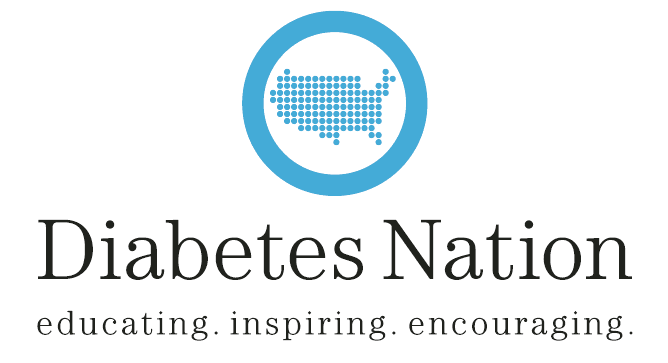60 Second Prior Authorization
The prior authorization process is an opportunity for healthcare providers to communicate to insurance companies that a particular therapy or intervention is warranted. The process can be a daunting, time consuming task for healthcare providers as they often serve patients with several different insurance companies with different formularies and step therapies required to be completed before a particular medication therapy is considered. There are two ways to deal with the prior authorization process.
First, is to embrace it head-on and provide all the necessary paperwork in order to attempt to get approval for a specific therapy, that in your medical opinion is appropriate. The second option is to avoid it altogether and take the path of least resistance by submitting to insurance company formularies and only selecting therapies from their formulary list. Unfortunately, medicine cannot be practiced today without encountering medication formularies, or the prior authorization process.
Is there a way to approach the prior authorization process that could increase the likelihood of approval, but not cost us the precious little extra time we have? Here are a few tips that might allow you to provide the information without increasing your time burden.
First off anticipate the prior authorization.
Don’t wait for the insurance company to request the necessary information, anticipate the need for this, and place it in the patient’s chart during the patient encounter. In other words, dictate it directly or document this into the patient record at the time of the visit.
The vast majority of healthcare providers know if a medication is generic or branded.
If we assume that a branded medication requires documentation, then in every instance when a branded medication is desired for the patient’s care, the necessary documentation should be included in the chart during the visit. I would suggest not to use valuable time looking up individual insurance formulary coverage for therapies, unless the EHR system you use in your practice provides that information when issuing the prescription.
If in your medical decision process you think a specific therapy is best, but not listed on the formulary, don’t shy away from the prior authorization attempt.
Often times if you document the reasoning behind your decision, the therapy may be approved based on the information you provide. Here is how this can be accomplished. As you are charting the patient encounter, embed into the SOAP note the narrative of your decision-making for the desired treatment. Include meaningful information such as duration of disease, current standards of care recommendations such as AACE or ADA, prior treatments used with side effects or failures, co-morbid conditions that guide your decision process, or secondary benefits a therapy may additionally provide a patient such as cardiovascular protection. You don’t need to write a novel, just document your clinical decision making into the note at the time of the visit. By anticipating the need for this information during the visit, and placing it in the note, it will be available if needed in the future.
Continue on with the prescribing the treatment and wait for any notification from either pharmacy or payor for prior authorization required. If needed, the necessary information is waiting in the patient record to be printed off and sent to the insurance company, often times preceding the request of the payor. Incorporating this habit of dictation in your practice will save time in the documentation process. The information will always be available in the patient record for your staff if needed, and since it is obtained at the time of the visit, it will lessen the time commitment for gathering the information at a later date.
Prior Authorization Case Example SOAP Note
Subjective: Mrs. Smith is a 57-year-old female with Type 2 Diabetes for 4 years she has hypertension, obesity, and elevated cholesterol. She is currently on Glucophage 1000 mg bid for the last 2 years and her recent A1C is at 7.2. She has been trying to lose weight and is concerned that adding an additional agent for blood sugar control it may increase her weight. In addition, if low blood sugars are one of her concerns because she does not like how it makes her feel, she has to eat more, or it poses a safety risk, include those facts. (If the patient has issues of renal impairment, congestive heart failure, other co-morbid conditions, or contraindications that direct you to a prescribe or eliminate a specific treatment include that information in your documentation)
Proceed with the Objective portion or Physical Exam. Then in the Assessment, list Diabetes Lack of control and cite the patient’s specific A1C target or time in range desired. Make sure all medication failures or specific adverse reactions are in the assessment as well, especially when the patient is at their glycemic goal but a medication change is warranted. Include secondary diagnoses such as obesity, renal impairment, or other cardiovascular issues if making a case for specific medications with labeled effects or desired beneficial effects.
In the Plan section of the documentation, use the following verbiage. Please let this note serve as a prior authorization for “XYZ Therapy Chosen Therapy “, then list why this therapy was chosen. In this case example the patient has an A1C of 7.2 which is above goal, and she has failed max dose Metformin (Lets consider the patient was older with an increased risk for hypoglycemia or had impaired kidneys. This information may be helpful to add as some medications are indicated for patients with impaired kidneys or at increased risk for hypoglycemia. In addition, some therapies have less weight gain or are associated with weight loss and could be a desired secondary end point.)
In summary, tell the patient’s medical story, why you in your professional opinion you are choosing a particular treatment, what outcomes or protection you are anticipating, and side effects and contraindications you are trying to avoid with other treatment. Finally, as a professional who is highly educated in your field and held to a standard of conduct, inform the insurance company that they may needs to assume the liability if they do not agree with your professional opinion.
Now the waiting game begins. Proceed with the prescription process and wait for notification from the pharmacy that the Prior Authorization is required (often these come as faxes). Here is one of the most important parts. Train you staff to look for these prior authorizations faxes. They can then go the chart note, where the prior authorization is already done, copy the encounter note and add supporting documentation of A1C, co-morbid conditions or glucose logs. This is sent on to the insurance company prior to the authorization paperwork received from them. If the payor requires the documentation to be on the “Company Form” then the information is stapled to the form and “see attached” is added to the form. The key to time saving is the provider always documents this in the chart, and your staff knows it will be there if the insurance company needs supporting documentation.
This will not guarantee the authorization will be approved. It will lessen the time burden by documenting the information at the time of the visit, be present in all patient encounters regardless of know formulary coverage, and provide a narrative of clinical judgment that is available at any time in the future. I encourage you to keep advocating for your patients and using your skills are you care for those in your practice.

